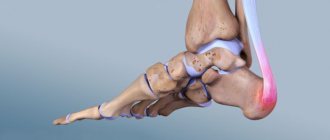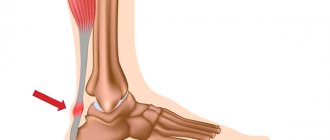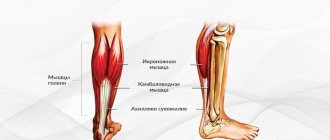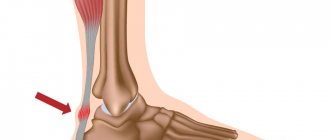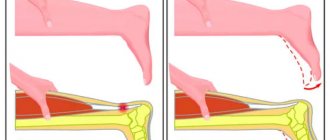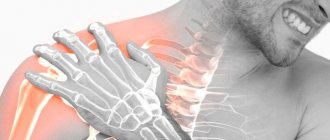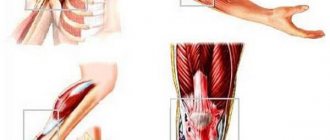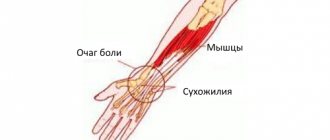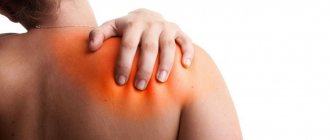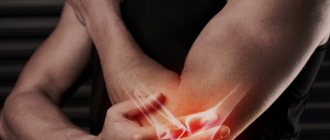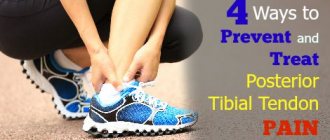Tendinitis of the calcaneal tendon in ICD 10 has the code M76.6 This is a disease in which the inflammatory-degenerative process is localized to the Achilles tendon. Athletes are mainly susceptible to the disease, since long-term sports are accompanied by excessive stress on the Achilles tendon, which results in injuries. The disease is often diagnosed in older people. Patients who are treated for Achilles tendonitis at Yusupov Hospital have the following benefits;
- European level of comfort;
- Diagnostics using the latest devices from leading global manufacturers;
- Treatment with effective medications that are registered in the Russian Federation and have minimal side effects;
- Restoring the function of the lower limb using innovative rehabilitation techniques;
- Individual approach to the treatment of each patient.
Depending on the course of the disease and clinical picture, there are 3 main types of heel tendonitis:
- Peritendinitis is a type of disease that is characterized by inflammation and degenerative process of the soft tissues surrounding the joint;
- Tendinitis is an inflammatory lesion of the Achilles tendon itself, without involving adjacent tissues in the pathological process;
- Enthesopathy is a degenerative process in the Achilles tendon at the junction with the bone (sometimes accompanied by the development of a heel spur).
Severe cases of calcaneal tendonitis are discussed by professors, associate professors, and doctors of the highest category at a meeting of the Expert Council. Leading specialists in the field of rheumatology and orthopedics collectively decide on the need to perform surgical intervention in patients for whom all innovative methods of conservative therapy have proven ineffective. The operations are performed by traumatologists who are fluent in the techniques of modern surgical interventions on the Achilles tendon.
What is Achilles tendinitis?
The Achilles tendon is considered one of the densest formations in our body. With the participation of this ligament, the heel is raised and pushed off the surface with the fingers.
When using unsuitable shoes, while moving on an inclined surface, or jogging, significant loads are placed on the heel tendon, which causes frequent injury.
In addition, a load of identical force can reduce the strength of this ligament and provoke the appearance of dystrophic disorders. All kinds of changes in conductivity can also lead to tissue dehydration, slowdown of metabolic processes and salt deposition.
As a result of the above processes, the tendon's resistance to micro-tears that occur during sudden changes in body position and stretching is significantly reduced.
People in the middle age group (over 35 years old) are susceptible to similar degenerative processes. However, in people who daily engage in strenuous physical work and athletes, such manifestations can occur much more often, which is due to regular overload and premature aging of tissue in the tendon area.
According to experts, it is precisely those who engage in active sports training and do not pay enough attention and time to the recovery period that develop Achilles tendinitis. A similar situation can manifest itself when carrying out excessive loads without going through the preparatory stage.
As a result, the muscle stretches weakly, inflammatory processes appear, and damage appears in the ligament area. This is accompanied by acute pain during physical activity.
If a person does not visit a specialist in a timely manner and does not begin treatment procedures, this may provoke a tendon rupture in the future.
In some situations, damage may be mechanical. But the most common is tendinitis of the Achilles tendon, which is accompanied by the appearance of inflammatory foci.
If Achilles tendonitis is of a similar nature, then treatment is carried out with the use of anti-inflammatory drugs. In case of mechanical damage, long-term therapy and special exercises are required until the ligament tissue is fully restored.
Make an appointment Online booking
- Clinic on Krasnopresnenskaya +7 (499) 252-41-35 Volkov lane, 21
- Clinic on Varshavskaya +7 (499) 610-02-09 Varshavskoe highway, 75, building 1
- Clinic in Annino +7 (495) 388-08-08 Varshavskoe highway, 154, building 1
Causes of Achilles pain
The causes of tendon pain are quite different:
- Typically, the Achilles tendon bothers people during exercise after 30 years of age due to lack of proper warm-up, because the extensibility of the tendons decreases as the years pass.
- If you have flat feet or wear shoes that are not suitable for sports, you may also experience pain in the tendon. High heels or lack thereof can cause pain.
- Achilles pain can occur due to overtraining . This affects not only beginners, but also professional athletes who train too aggressively.
- Damage to ligaments, bones, tendons or other connective tissues - prolonged excessive stress on the body without proper rest or movements that are too sudden for unprepared muscles.
Other causes of pain in the Achilles tendon are inflammatory diseases: tendinitis, enthesopathy or bursitis, and other diseases of the extremities.
Types and forms of Achilles tendonitis
Taking into account the factors that caused the onset of the disease and the nature of the disease, there are 4 types of Achilles tendinitis:
- Aseptic acute. When connective tissue fibers are damaged, the body responds, but the infection does not penetrate the affected area;
- Fibrous. It is chronic. In this case, the functional tissue is gradually replaced by pathological formations (scars);
- Ossifying. It is chronic in nature. Tissues lose elasticity, calcium formations appear;
- Acute purulent. The infection penetrates from nearby inflammatory foci or from the outside.
There are also three forms of pathology:
- Enthesopathy. The inflammatory focus is located in the area where the ligament attaches to the heel bone;
- Peritendinitis. Inflammation spreads to nearby tissues;
- Tendinitis of the heel or Achilles tendon. The lesion is located at the location of the heel connective tissue cord.
Causes of Achilles tendonitis
Factors that cause disturbances in this area can be of a different nature.
Age factors
As you know, the tendon is represented by two types of fibers: collagen and elastin. The former are responsible for the strength of the ligament, the latter provide the ability to stretch.
Typically, the extensibility of the Achilles tendon is 5% of the original length. Due to this, the lower limb is able to perform springy movements, which also indicates the shock-absorbing ability of the tendon.
However, as the body matures, the ligament's ability to stretch decreases, and increased loads can cause micro-tears and damage to the fibers.
This explains why experts do not advise people over the age of 35 to start sports training. In such situations, a mandatory warm-up and warming up of the muscles is required.
Excessive loads
Lesions may occur in persons with professional physical training. The reason for this lies in the presence of significant and regular tension in the ligament area. As a result, if there is no sufficient rest period, the tissues are deprived of the ability to relax and regenerate.
As a rule, athletes do not attach due importance to the initial signs of the disease. This can provoke further intensification of degenerative processes, lead to the appearance of a chronic disease, and can also cause complete rupture of the ligament.
To prevent such complications, even mild pain should be taken as a signal to action, because they can indicate the appearance of microtears in tissues and indicate the need to stop (temporarily or completely) sports training. Therefore, if you notice the first signs of the disease, or you are diagnosed with Achilles tendonitis, treatment should begin as early as possible. And only an experienced doctor will tell you when you can resume exercises, or inform you about the need to stop them completely.
A few words about overpronation
The physiological rolling of the foot inward is called hyperpronation. This position of the ligament during walking and other active movements often leads to injury or excessive stretching.
. . . .
Using inappropriate shoes
Achilles tendinitis and, as a consequence, the need for treatment of such a pathology can also provoke:
- Using inappropriate shoes when performing physical exercises. This contributes to irrational load distribution and can negatively affect the function of the tendon;
- Using high heel shoes. Women who prefer such shoes also risk damaging ligaments in this area. However, they may experience discomfort in this area the next time they wear flat shoes.
Haglund's deformity
It is a bony formation that looks like a bubble and is located in close proximity to the area adjacent to the tendon. Such growth causes the need for additional stretching of the ligament under significant loads.
Depending on the presence of inflammatory foci, the degree of hardness of the formation is determined.
Infectious processes
In this situation, the appearance of inflammatory foci is associated with the penetration of infection.
Make an appointment Online booking
- Clinic on Krasnopresnenskaya +7 (499) 252-41-35 Volkov lane, 21
- Clinic on Varshavskaya +7 (499) 610-02-09 Varshavskoe highway, 75, building 1
- Clinic in Annino +7 (495) 388-08-08 Varshavskoe highway, 154, building 1
Symptoms of Achilles tendonitis
When considering calcaneal or Achilles tendonitis, symptoms and the need for treatment, the form of the pathology should be taken into account. It can manifest itself either acutely or develop into a chronic process.
The acute form is characterized by a gradual development of the pathology: initially, a person begins to experience pain when engaging in sports exercises, which disappears during a break. Recurrence of discomfort is possible with new physical activity. The subsidence of the pain syndrome can be explained by the healing of micro-tears during a long break after training. However, if you have signs of Achilles tendinitis at the initial stage, but do not want to undergo treatment, the disease may gradually become chronic.
In such a situation, increased pain occurs over some time. In addition, discomfort may be of the following nature:
- It becomes more pronounced during physical exercise, and can occur even after the preparatory stage (warming up the muscles);
- The length of the recovery period does not affect the possibility of eliminating discomfort. It can occur even in the morning;
- When moving on an uneven surface, the pain intensifies.
In this case, the following characteristic manifestations may be observed: the density of the ligaments increases; tension in this area increases; redness of the skin may be observed; mobility is lost at the location of the ankle; localization of pain can be observed on an impressive surface; there is a possibility of swelling; difficulties arise when trying to rise on your toes; In some situations, a peculiar creaking sensation occurs in the ankle joint.
How to choose the right running shoes?
To prevent Achilles tendinitis from recurring, strengthen and stretch your calf muscles. An excellent exercise to strengthen the Achilles using rubber bands . When we work the ankle back and forth and left and right, we have resistance in the form of rubber.
The second exercise that will help to simultaneously strengthen and stretch the muscles we need and work on the tendon is calf raise . We stand on a small step with the front of our feet, so that the heels hang down. And we begin slow ascents and descents. You can stay in one position for 10-20 seconds.
Don't forget that properly selected orthopedic shoes with a slight drop between the toe and heel are the ideal solution. During tendonitis, it is best to avoid hill training to avoid over-exerting yourself. And be sure to include rest in your training schedule.
Diagnosis of Achilles tendinitis
Before making a diagnosis, the specialist examines the patient and studies the complaints received from him.
The following methods are used to confirm tendinitis:
- MRI. The information value of this method is noted in advanced stages of the disease (it is possible to find out whether fluid has accumulated in the affected area) and in the presence of scar changes;
- Radiography. The presence of Achilles tendonitis can be determined by x-ray. It becomes possible to detect pathological manifestations caused by the presence of calcium deposits;
- Testing for the presence of breaks. The ability to flex the joint while lying on the stomach is assessed. In this case, it becomes possible to determine the etiology and localization of the pain syndrome;
- Research in laboratory conditions.
Treatment of Achilles tendonitis
Before the appearance of serious degenerative changes in tissues, the disease can be treated without any further complications.
However, if a patient is diagnosed with chronic Achilles tendonitis, it is much more difficult to cope with this disease, since it often leads to a decrease in the motor activity of the ankle joint and tendon ruptures. Next, we will consider the main measures that, in the presence of this pathology, must be carried out without fail:
- In the first time after injury, compresses or lotions with ice are used, which are applied to the affected area every 3 hours;
- If heel tendonitis occurs due to infection, it is not recommended to use the above method;
- Decreased motor activity of the joint. This is one of the main measures that involves the use of plaster to fix the ankle joint.
After injury to the lower limb, it must be kept motionless for 48 hours. This will eliminate swelling, shorten the recovery period and prevent the appearance of a hematoma.
Treatment with shock wave therapy for achillotendinitis
The most effective and modern way to eliminate inflammatory processes characterized by the appearance of calcium deposits in the tendon area is shock wave therapy.
The positive effects of this new technique are based on the following mechanisms:
- Calcium formations in the tendons are destroyed;
- The pain syndrome is not only relieved, but also completely disappears;
- It is possible to completely normalize blood circulation;
- Metabolism improves;
- Inflammatory processes are eliminated;
- Tissue regeneration occurs;
- Motor activity in the lower extremities is normalized.
It is possible to obtain a sustainable healing effect and ensure positive dynamics from the first sessions. The frequency and intensity of procedures is determined individually. In addition, a timely visit to a specialist allows you to get the desired result when exposed to shock waves.
Experienced physiotherapists who are able to conduct a thorough diagnosis, accurately diagnose and select the most effective treatment procedures will work with you at the medical center. At the same time, the priority direction of our activity is the implementation of UVT procedures using innovative Swiss equipment and with impressive discounts.
Make an appointment Online booking
- Clinic on Krasnopresnenskaya +7 (499) 252-41-35 Volkov lane, 21
- Clinic on Varshavskaya +7 (499) 610-02-09 Varshavskoe highway, 75, building 1
- Clinic in Annino +7 (495) 388-08-08 Varshavskoe highway, 154, building 1
Drug treatment for Achilles tendinitis
First of all, you should ensure the immobility of the foot in order to minimize the load on it. This is achieved by the following methods:
- Plaster or splint application;
- Use of crutches;
- Application of a fixing bandage;
- Applying a cotton plaster;
- Use of special orthopedic devices.
It is also recommended to use the following medications:
- Drugs included in the group of non-steroidal anti-inflammatory drugs, which include Diclofenac, Nurofen, etc.;
- Antibacterial therapy drugs;
- Use of external agents: Nise gel, Voltaren, etc.;
- Compresses using Analgin and Acetylsalicylic acid - for pain relief.
After eliminating pain, massage and general strengthening gymnastic exercises should begin.
Physiotherapeutic treatment of achilles tendinitis
When it comes to how best to treat Achilles tendinitis, physical therapy is paramount. It helps restore blood flow, improves metabolism and speeds up the recovery period.
In this case, the following activities are carried out:
- Stimulation with light waves of a fixed length (laser exposure);
- Exposure to low frequency electromagnetic field;
- A method based on the influence of galvanic current and an active anti-inflammatory substance introduced through it;
- Use of high-frequency sound pulses;
- Shock wave therapy: destruction of calcium formations using low-frequency shock waves;
- Warming up;
- Massotherapy;
- Special exercises.
Surgery
The need for surgical intervention arises in situations where conservative therapy has not given the desired effect. In this case, the following sequential steps are implemented:
- The skin is cut to gain access to the ligament;
- Excision of dense calcium formations and other pathologically altered tissues is performed;
- After 50% of the affected tissue has been removed, a procedure is performed to restore collagen fibers using tendon from the plantaris muscle.
The duration of the recovery period reaches 12 weeks. The patient wears a cast for 30 days after the intervention.
The start of rehabilitation procedures is determined depending on the rate of tissue healing. As a rule, the duration of this period reaches 2 months.
Make an appointment Online booking
- Clinic on Krasnopresnenskaya +7 (499) 252-41-35 Volkov lane, 21
- Clinic on Varshavskaya +7 (499) 610-02-09 Varshavskoe highway, 75, building 1
- Clinic in Annino +7 (495) 388-08-08 Varshavskoe highway, 154, building 1
Folk remedies
Many patients are interested in how to treat Achilles tendonitis using traditional methods. First of all, you should check with your doctor about the possibility of such a treatment method. In this case, the following means can be used:
- Seasoning curcumin. This is an antibacterial agent of natural origin, which also has an anti-inflammatory effect and eliminates the inflammatory process in the tendon area. However, you should consume this substance at least 500 g per day;
- Infusion of walnut partitions. For this purpose, use 0.5 liters of vodka and 1 glass of partitions. The infusion period reaches 3 weeks. You need to use the product 1 teaspoon twice a day;
- Solution with mumiyo resin. The mixture is applied to the affected area, and also consumed orally in the form of a solution in milk;
- Pine-salt baths;
- Ice massage. Has an analgesic effect.
Traditional treatment
Folk remedies will help reduce the severity of sprain symptoms, relieve swelling and pain. For complex injuries, a more drastic solution must be applied.
Here are some recipes:
- Elderberry decoction is made like this . To treat tendons, boil green elderberry in three liters of water and add 1 tbsp. regular soda. The decoction can be used in the form of foot baths or lotions.
- Plantain seed: 2 tbsp. l. Pour 1 cup of boiling water over plantain seeds. Boil. Cool, mix well, pass through a sieve and drink 2 tbsp. l. 3 times a day.
- Heat treatment. Heat helps relieve swelling. Pour slightly heated sand into a material bag and apply to the injured leg, leaving for 10-15 minutes. You can use salt and wheat.
- Onion compress. Grind a couple of onions to a porridge state and mix with 1 tablespoon of sea salt. The mixture of onion and salt is placed on a cloth and applied to the back of the leg. The compress should be kept for several hours for 2-3 days.
Shilajit-based compresses will also help relieve symptoms of inflammation, pain and swelling; you can use a Shilajit solution from tablets sold in pharmacies for treatment.
Preventive actions
To prevent the development of calcific tendinitis of the Achilles tendon, the following principles should be adhered to:
- If you are advised to exercise for Achilles tendonitis, the load should be increased gradually;
- Warming up the tendons and muscles is a must before performing any physical exercise;
- For daily use and sports activities, you should choose the right shoes;
- If pain occurs, you must stop training.
Achilles tendonitis, as evidenced by reviews, is easily treatable, but only if it is carried out at the initial stage of the disease. In advanced forms, severe consequences such as chronic Achilles tendinitis or tendon rupture can occur. To achieve a positive result, it is necessary to use a set of procedures aimed at ensuring immobility of the affected area, as well as achieving the necessary analgesic and anti-inflammatory effect.
First aid at home for Achilles injury
When pain syndrome begins to appear regularly and interferes with normal activity, it is necessary to consult a doctor for diagnosis and prescribing adequate treatment.
First aid at home is important to provide as early as possible:
- Immediately after pain occurs, you need to remove the load and ensure rest of the limb.
- You should not exercise or lift weights for several days until the pain goes away.
- Apply cold to the damaged area : in the form of a compress several times a day for 10-15 minutes.
- You need to select shoes carefully , taking into account the specifics of sports activities.
- In case of pain in the Achilles tendon after running or other sports, it is recommended to fix the ankle with an elastic bandage or tape.
- Women should stop wearing high heels to relieve stress and pain on the Achilles.
Prognosis for recovery
Considering Achilles tendinitis and reviews of the treatment of this disease, we can conclude that the recovery period primarily depends on the degree of damage. With a timely visit to a specialist, more than 80% of patients can count on positive treatment results. In this case, the rehabilitation period can reach 3 months.
The resumption of usual physical activity must be carried out gradually, which will prevent deterioration of the heel tendon.
Recovery and rehabilitation
To quickly restore Achilles tissue in case of chronic or acute illness or injury, it is necessary to strictly follow all the instructions of the attending physician.
Clinical recommendations for the rehabilitation period:
- reduce the load on the affected leg as much as possible;
- move for some time with the help of a cane or crutches (if necessary);
- if intense pain occurs or swelling increases, you should immediately inform your doctor about the appearance of other manifestations of the disease;
- maintain bed rest immediately after surgery and during severe pain;
- reducing pressure on the tendon by purchasing good special shoes;
- fix the ankle joint and foot with an orthosis or wear an elastic bandage for a period of one to three months;
- Be sure to use physical therapy in the late stages of recovery.
